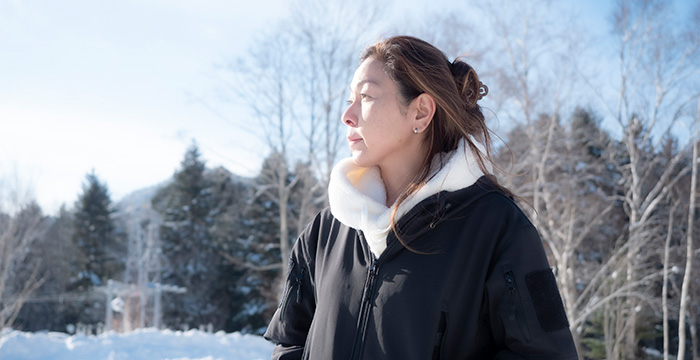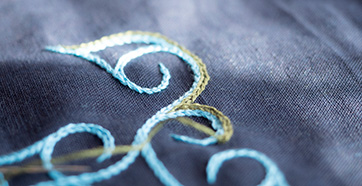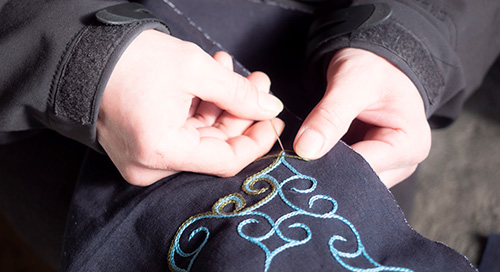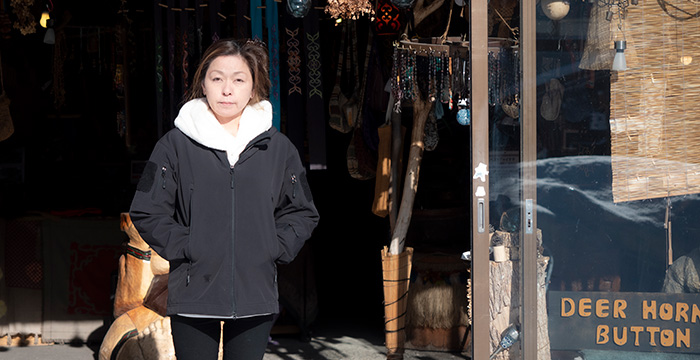
Erika Katsuya is an embroiderer, and the proprietor of Hapo Store at Lake Akan Ainu Kotan.
Both Katsuya’s grandmother and mother were embroiderers. When she was around 17, her mother was always sitting in front of the store, working at her handicrafts when Katsuya returned home from school. She would look at the embroidery crafted by her hands and think, “Wow, that’s beautiful.” She began trying to create patterns like hers, but she wasn’t very good at it. Her stitches were crooked. It was difficult.


Katsuya’s mother was always embroidering. At home, in front of the store, backstage at a dance performance, wherever she was. She observed and memorised her mother’s technique from the sidelines, and devoted herself to practising embroidery. Eventually, she learned to design her own patterns. Her grandmother’s patterns, her mother’s patterns, and now, hers: Katsuya’s works with the intent of uniting them as one. By combining the patterns of old, a new design can be brought to life.


Katsuya’s work focuses on chinjiri, a method associated with the Ainu of eastern Hokkaido. Chinjiri involves embroidering directly onto dyed fabric. A paper pattern is constructed, lines are drawn on the fabric, coloured threads are chosen, and from there the embroidery process begins. Even a slight difference in the colour selection can change the feel of the work entirely. Katsuya’s unique sense of colour draws in the eye with unexpected combinations, creating refined works that surprise and delight the viewer.

Not only colour, but form, too, is integral to Katsuya’s signature style. She begins her needlework by paying close attention to the lines drawn on the fabric. As she continues to sew, fresh imaginings blossom from her fingertips: “Maybe a little more this way. A little more over there.” As her fingers work the needle, emotions rise from her heart and begin to dance, her body’s instincts guiding her toward inspiration.
If you look closely, the borders of the embroidery overlap the original lines that were drawn. In this way, a unique sense of character arises from the edges of every motif. It is these details that make the seemingly inanimate embroidery feel alive.

Katsuya currently spends her days producing her works and teaching embroidery and dance, while raising her two children in Akan. It’s a busy and enriching way of life. Amid all of this, the moments she spends embroidering are an important time, one where she can meet herself face on, and feel a renewed sense of being.
Katsuya Erika was raised in Lake Akan Ainu Kotan. At the age of 17, Katsuya realised how beautiful her mother’s work as an embroiderer was. From that moment, Katsuya learned from her and practised her technique. Katsuya’s grandmother was an embroiderer too. She’s developed my own kind of spiritual dedication, continuing the legacy of their art.
Her hobby is traditional Ainu dance. She spends her days producing artworks and teaching embroidery and dance, while raising her two children in Akan.
Hapo Store
4-7-14 Lake Akan Ainu Kotan
Lake Akan Onsen
Akan-cho, Kushiro-shi
Hokkaido






